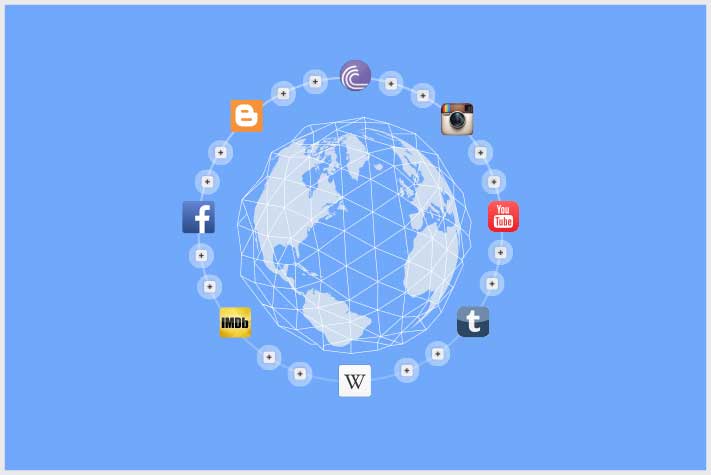Data, by its very definition, is facts and statistics collected together for reference or analysis. Data can exist in a variety of forms – as numbers or text stored in the form of bits or bytes stored in electronic memory, or as experiences and facts stored in a person’s mind.
Here at Parrot Analytics we have collected billions of data points from a variety of social eco systems such as Facebook, Instagram, Wikipedia and others. This data is processed using state-of-art tools and techniques to generate global content Demand Ratings.
Structured vs. unstructured data

With respect to mass categorization that is central to most computer operations, there are two types of data: structured data and unstructured data. Structured data refers to information with a high degree of organization (like an excel spreadsheet, where pieces of information are stored in a well-organized and easy to process manner); whereas unstructured data essentially represents the opposite (such as Tweets, which consist of loosely coupled pieces of information with lots of ambiguity and a lack of language precision). The term unstructured data is often closely associated with “Big Data”, which refers to extremely large volumes of data that is difficult to handle with conventional tools. Experts at Gartner, Forrester and IDC estimate that 80% of enterprise data is unstructured data, and that is growing exponentially at a rate of 60% per annum. In addition to the social data, there are other forms of unstructured data such as Word Documents, PDF files, Audio files, Presentations, videos, satellite images, text messaging and scientific data.
Why unstructured data is important?
Unstructured data is created everywhere, all the time. While machines can efficiently transform structured data into insights, unstructured data offers lot more depth and context to the findings. It can help companies narrow down to the root causes of the issues, understanding the latent factors for performance improvement and finding out key indicators of success.
User generated contents, in the form of blog post, tweets, comments and multimedia sharing, are a key factor in establishing a connection between the producers and the consumers of information.
Enterprise solutions are relying more and more on unstructured data for helping big companies in making billion dollar decisions. For instance, tracking the pulse of the social media data sources (such as Twitter, Facebook, Instagram, Tumbler etc) provides opportunities to understand individuals, groups and societies. Collecting, combining and analysing this wealth of data can help companies to harness their brand awareness, improve their product or customer service, and advertise and market their products in a better way.
Tools and techniques for handling unstructured data
The lack of structure makes the compilation and processing of the data a laborious and time consuming task. The challenges in unstructured data processing and analytics involve data scraping, data cleansing, Holistic data sources, data protection, data interpretation and data visualization.
Fortunately, in this digital era, there are plenty of very efficient tools and techniques that make this process easier for us. Using the right tools for processing can add depth to the data analysis that couldn’t be achieved otherwise.
Techniques and algorithms for processing unstructured data and transforming it to meaningful insights belong to a variety of fields such as Machine Learning, Data Mining, Natural language Processing, Text Analytics, Predictive Modelling, Statistical Analysis and Computational Intelligence, to name a few.
Several commercial tools are available for understanding and analyzing unstructured data. These include SAS, SPSS, OpenRefine, Knime, RapidMiner, Inxight, BrainSpace, ZL technologies, Matlab, Tableau, Google Fusion Tables, Alpine Data Labs, Revolution Analytics and the list goes on.
Open source tools for processing and visualisation of unstructured data include Weka, R Studio, ITALASSI, ELKI, Tanagra, LingPipe, Data Applied, MOA, FreeMat and many others.
For Big data storage and processing tools like Hadoop, Ambari, Flume, HBase, Mahout, MapReduce, Pig, Hive, Spark, Tez are very popular.
Example of getting insights from unstructured data
According to PewResearch, 73% of online adults use a social networking site. One of the many ways businesses can utilize this information for performance assessment is by collecting brand sentiments from social data. They can compute customer satisfaction metrics, understand customer experience, and identify detractors and promoters for marketing the products.
Shifts in sentiments on social media have been shown to correlate with shifts in the stock market. Finance companies can forecast market trends based on news, blogs and social media sentiments.
The Obama administration used sentiment analysis to gauge public opinion to policy announcements and campaign messages ahead of 2012 presidential election.
Expedia Canada took advantage of sentiment analysis by quickly understanding consumer attitudes and responding to it accordingly when there was a steady increase in the negative feedback to the music in one of their television adverts.
Sentiment analysis is one use case of how unstructured data could be effectively used. There are numerous other use cases where the unstructured data can provides deep insights into the performance of businesses and companies.
Conclusion
Significant time and value goes into creating unstructured data. Analysing unstructured data can provide competitive advantages. A variety of tools and techniques are available to help companies derive valuable business insights by efficiently and effectively exploring unstructured data.
– Shahida Jabeen, Data Scientist

